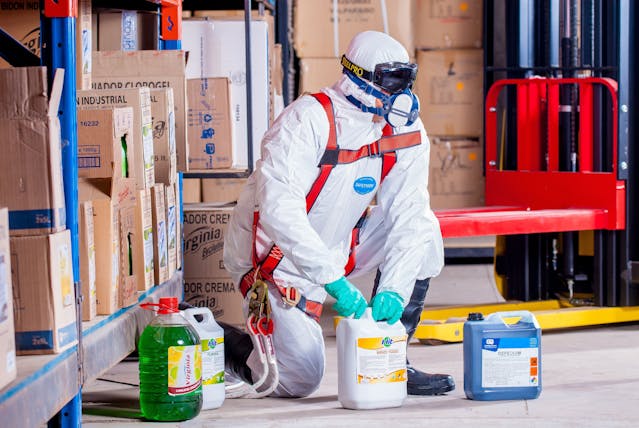Dashpivot Article – JHA vs Pre-Task Plan
JHA vs Pre-Task Plan
In this help article, we define what distinguishes a JHA from a pre-task plan, and provide you with free resources for both, so that you can implement and improve your own critical safety docs.

The Job Hazard Analysis and the Pre-Task Plan are two of the most useful techniques applied for safety planning in the construction industry. This is paramount since the nature of the work cannot be very safe and easy, and although they both tend to make things safer and more efficient, how it is done can differ.
What is Job Hazard Analysis (JHA)?
A job hazard analysis is a safety methodical process used to identify hazards and assess risks in the workplace, which includes the following steps:
- Breaking down a job into its component tasks
- Identify potential hazards in each task
- Evaluate the risks associated with safety hazards
- Implement measures to control or eliminate the safety risks
A job hazard analysis is a general, proactive safety evaluation that safety professionals and managers generally conduct at the planning stage of a project or when introducing new work processes into an existing operation. Unlike other safety tools, JHA is so detailed that teams will be able to identify potential danger and put protective measures in place before the worker could be exposed to such risks, making it a first step to ensuring a work environment with fewer chances of accidents or injuries ever happening.
You can find more details in this Construction Job Hazard Analysis example.
What is a Pre-Task Plan (PTP)?
Unlike in the general JHA, a pre-task plan zooms into greater detail and precision through concentration on specific activities in a construction project, providing a comprehensive look at what is required to accomplish a task safely. The dynamic documents that safety managers usually complete are done either right at the start of each workday or just before starting an actual job, making sure to put down all the details, starting from the nature of work to be conducted down to the workers, tools, and materials to be included in accomplishing it.
The beauty of a PTP lies in its flexibility and elaboration, as it not only identifies risks about the specific tasks at hand while creating specific safety protocols, but it also outlines emergency responses and addresses regulatory compliance. What makes PTPs particularly valuable is that they can adapt to changing project conditions, allowing teams to change their safety approaches and control strategies when new issues arise during the actual construction process.
Learn more about What is a Pre-Task Plan.
JHA Vs. Pre-Task Plan: The Main Differences
There are many similarities between job hazard analysis and pre-task plans, which provide a lot of benefits in ensuring safety on the construction site. The main difference lies in their focus and timing; the Job Hazard Analysis typically analyses risks and safety measures before the project commences, whereas Pre-Task Plans are dynamic and can be altered as required in the course of construction. Here are the main differences between the two:
Scope and Detail
A Job Hazard Analysis is primarily focused on hazard identification and risk assessment and is a vital component of management that specifically addresses safety concerns. On the other hand, PTP provides a more general and broader overview, which often includes the operational details of how a task is to be performed. PTPs offer a more comprehensive scope, covering all aspects of operations, like resource allocation, timelines, and quality control measures.
Application in the Workflow
A Job Hazard Analysis is conducted as a preliminary safety analysis, which is done primarily at the planning stage of a project or a task. Doing a JHA can help in understanding the risks involved in a job and planning accordingly. PTPs are typically developed closer to the execution phase of the task, which can be adjusted as more information becomes available or the conditions change in the process.
Focus Areas
The main focus of conducting a JHA is to identify and mitigate hazards, which are narrowly tailored to the safety aspect of job tasks. PTPs include safety planning, which also focuses on the operational execution of the task and integrates safety planning with the overall task management.
How JHA & PTP Complement Each Other in Safety Planning
Even though Job Hazard Analysis and Pre-Task Planning are used for different purposes, their integration together provides a very effective safety management approach. JHA is a long-term systematic planning tool to analyse the job components and identify all types of hazards; on the other hand, PTP is a dynamic form of daily assessment that identifies immediate safety issues.
Create an Integrated System
JHA and PTP join hands to form a strong system covering both macro- and micro-level safety issues. While JHA forms the basic safety system, PTP allows workers to modify these to real-world variations. Workers begin with the basics that JHA sets and then make use of PTP to introduce daily variables in the form of weather conditions, availability of tools, and problems specific to sites.
Improved Communication and Culture
This integrated approach creates communication across organisational levels, with JHA taking input from management and safety professionals, while PTP encourages daily safety dialogues among team members. The result of this process is a more engaged workforce where safety becomes everyone's responsibility.
Continuous Improvement Cycle
This interaction generates positive feedback loops in which PTP findings feed into JHA updates, and JHA format assists in incorporating daily learning into standard procedures. This loop ensures that safety programmes are current and effective as conditions in the workplace change.
Resource Optimisation
Using JHA to identify significant investment requirements while using PTP findings to fine-tune these investments, organisations can optimise their safety resources. This balanced approach avoids overengineering and failure to include critical safety requirements.
The Importance of Merging JHA/PTP and Tech
The advancement of digital technologies is changing how companies administer safety procedures. Unlike their paper-based counterparts, modern solutions emphasise efficiency through the use of automated documentation and data analysis, enabling companies to be more proactive when it comes to safety management.
Mobility in Field Operations
Mobile solutions are rapidly changing the way field workers interact with JHA and PTP documents. Employing software such as Dashpivot allows field teams access to critical information, including safety forms, hazard documentation, and assessments, directly through their smartphones, which eliminates the need for paperwork.
Real-Time Data Collection and Analysis
Advanced mobile solutions provide real-time collection and analysis of data, which is a game changer for safety management. This enables companies to monitor trends, track JHA and PTP completion rates, share reports with stakeholders instantly, and communicate the lessons learned, all while being on-site.
Better Communication and Collaboration
Digital platforms connect field teams and management by sending instant safety alerts, providing real-time approvals and reviews, photo and video documentation, sharing safety updates instantly, and coming up with digital audit trails. Technology in JHA and PTP is not just an efficiency gain; it’s a whole new way of managing safety.
Shown below are the completed JHA and Pre-Task Plans to see how a completed doc should look:

Use this Pre-Task Plan for yourself
Use this free Job Hazard Analysis (JHA) now
Digitise your JHA and Pre-Task Plans
With Dashpivot, it’s now easier for your team to remember the differences in JHAs and Pre-Task Plans by using a digital JHA template and Pre-Task Plan template. These templates come pre-built with all of the fields and sections you need to keep your team safe and work compliant. You can easily customise the forms with the drag-and-drop form builder to add any extra fields you need specific to your project requirements. You can also share completed reports with your team or external third parties, in case of an audit, as perfectly formatted CSV or PDF.
In Summary
Both JHAs and PTPs have their advantages in organisational settings, but comparisons can be drawn regarding their scope and timing. For instance, JHA provides a more coarse estimation of general safety up front, while PTPs are broader in scope and more adaptive to changing situations, making them more task-specific. In essence, JHA sets the groundwork, while PTP solves the issues as they arise. When the two are used in tandem, communication improves, a positive safety culture is fostered, and resources are utilised more efficiently, all thanks to advanced technology solutions.
Both PTPs and JHAs are bound to be easier to apply through the inclusion of mobile technologies like a JHA app and PTP app that aid in communication and provide on-the-go information relaying, thereby ensuring that construction sites are safer and more efficient.

Hot Works Permit template
Ensure the necessary steps are taken before handling hot works.

Lock Out Tag Out template
Use this LOTO template as a framework for doing all of your lock and tag outs properly and safely.

Hazard Identification Checklist
Make identifying hazards a more integral part of your processes.







